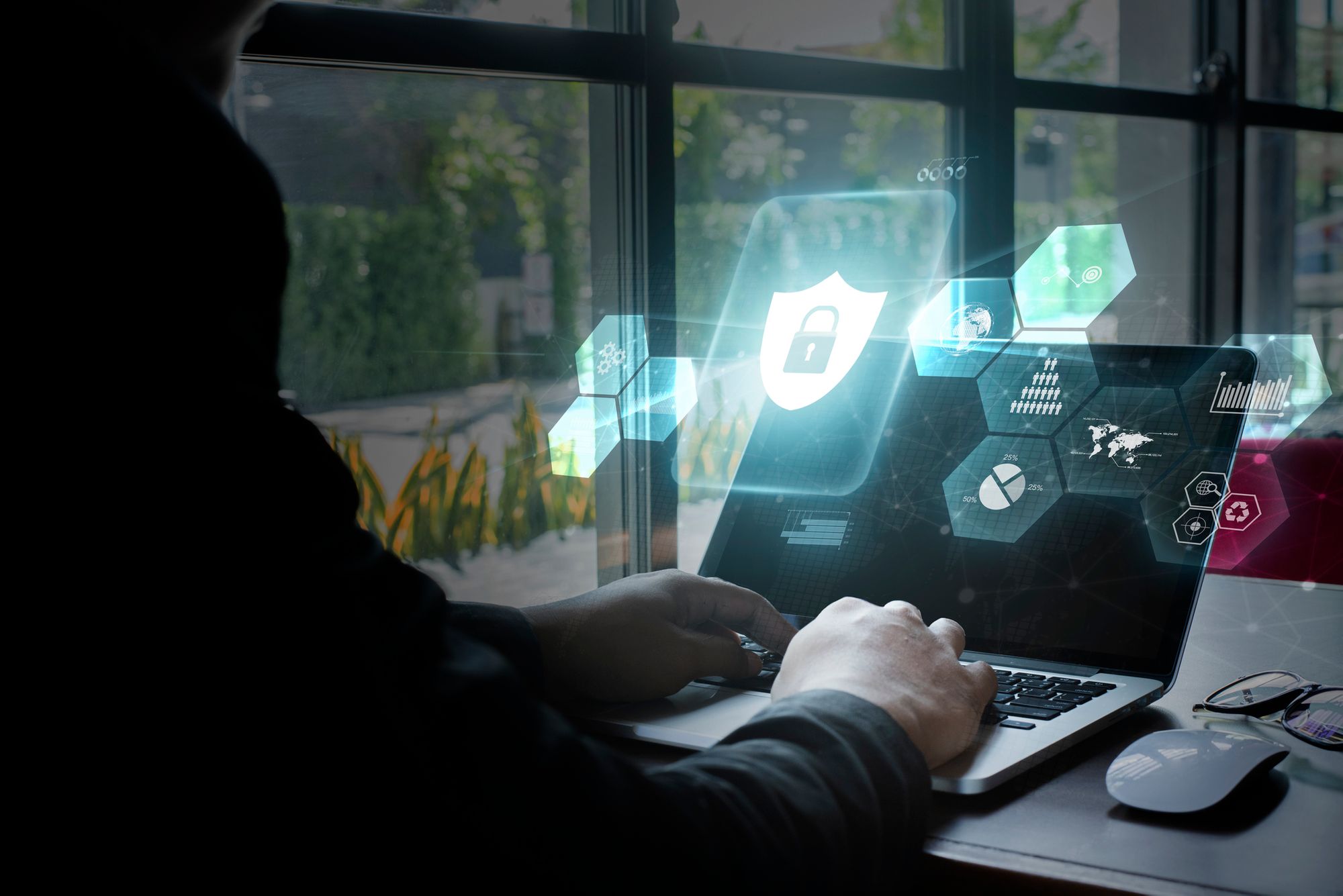Post Syndicated from Jake Godgart original https://blog.rapid7.com/2022/07/11/rapid7-mdr-reduced-breaches-by-90-via-greater-efficiency-to-detect-investigate-respond-to-and-remediate-breaches/

When a security operations center (SOC) is operating at a deficit, they increase the possibility of beach reductions. That is, the likelihood they won’t be able to travel to any beaches – or any vacation destinations whatsoever – anytime in the near future. That can lead to burnout, which can lead to security talent loss, which can lead to the entire business being incredibly vulnerable.
So now let’s talk about breach reduction. As in, the charter of any security team.
No team can investigate every alert, but forging a valuable partnership with a Managed Detection and Response (MDR) provider can provide a turnkey solution and near-immediate headcount extension to your SOC.
A June 2022 Total Economic Impact™ study by Forrester Consulting commissioned by Rapid7 found that Rapid7’s SOC expertise – with XDR technology that generated improved visibility – enabled a composite organization using Rapid7 MDR to reduce the likelihood of a breach by 90% in the first year of partnership
The analysis was conducted using a hypothetical composite organization created for the purposes of the study, with insights gleaned from four real-life MDR customers. This composite reflects a security team profile we see often: a small team of two security analysts tasked with protecting 1,800 employees and 2,100 assets. We at Rapid7 see this as a tall order, but it’s one that (unfortunately) represents the state of security operations today.
The study concluded that partnering with Rapid7 MDR services experts enabled the composite organization to achieve end-to-end coverage and cut down on detection and response times. Let’s break down how Rapid7 MDR helped security teams reduce the likelihood of breaches by 90%.
1. Complete visibility into security environments
OK, so extended detection and response (XDR) isn’t exactly apples-to-apples with X-ray technology, but it’s an apt metaphor. Greater visibility, after all, helps to improve your overall security risk posture, and customers interviewed for the TEI study said their organizations were more secure thanks in part to this improved visibility. Rapid7’s InsightIDR uses its XDR superpowers to unify data from all over and beyond your modern environment, so it’s easier than ever to see and respond to a transgression.
The Rapid7 MDR team’s expertise in cloud-scalable XDR technology enables stronger signal-to-noise capabilities, so you only become aware of alerts that matter and get the peace of mind that comes from knowing we’ve got you covered. After all, being aware of a breach is better than not being aware of one – or having a customer alert you to the existence of a breach, which could lead to a different kind of breach: the relationship.
2. Detect and respond literally all day, every day
According to the Forrester TEI study, interviewed organizations had outdated technology that was used by staff to manually investigate each alert prior to partnering with Rapid7 MDR. These organizations’ security teams lacked expertise, were understaffed, and lacked visibility – the perfect storm to miss security incidents. Interviewees said there would be no way for them to implement a 24×7 detection and response program on their own without using Rapid7 MDR. As an interviewed director of information security for a financial services company said, “If we didn’t acquire Rapid7 MDR, I would have had to do a lot more manual work, and it would have kept me from other tasks.”
With the modern proliferation of threats, the only thing to do is to have 24x7x365 coverage of your entire network. As referenced above, that can be expensive and near-impossible to maintain, unless you’re gaining leverage with the right MDR partner.
For example, with Rapid7 MDR, customers can opt in to Active Response, which enables our expert SOC analysts to respond to a validated threat on your behalf. The service also removes quite a few headaches, providing the flexibility to configure or cancel responses so that unauthorized quarantines occur less frequently (as they may with automated containment actions).
A customer SOC team will also have their own access to InsightIDR, the underlying technology of Rapid7’s MDR services. With the ability to also run your own investigations, your team will be able to see what we see, and follow along with the process. No black boxes or Wizard of Oz reenactments here.
These days we say that round-the-clock monitoring isn’t just important – it’s a must. A good MDR provider will be able to take on those duties, raising any incidents discovered and validated, day and night. In particular, Rapid7 utilizes a follow-the-sun methodology. This purpose-built monitoring engine leverages incident-response (IR) teams all over the world – Australia, Ireland, the United States, and more – to ensure awake and active detection and response experts are investigating security alerts and only notifying you when there’s an actual incident. From the SOC or remote locations, these IR teams can perform real-time log analysis, threat hunting, and alert validation, for any customer.
Redundancy is key here. Attackers never take a day off, but security professionals working 9 to 5 do. Whether it’s national holidays or vacation season, the majority of attacks occur around these specific times security experts might set their status to “away.”
3. Gain more freedom to focus their energy elsewhere
In the TEI study, Forrester found that Rapid7 MDR was able to provide security teams with greater information and curated alert detections, with the ability to block specific threats. MDR also improved response times to detections by providing teams with a security resource dedicated to security incidents that require any response. This meant internal security teams could focus on other priorities and business objectives without dealing with:
Alert triage and investigations
An interviewed senior cybersecurity analyst at a technology solutions firm said analysts previously spent three to four hours a day on alert management. Now, with MDR, that same process only takes 10 minutes of their time! That means the small team can focus on other elements of their security program knowing there’s another team of experts monitoring their environment around the clock.
Threat response
An interviewed CISO at a healthcare firm reported that their response could take up to two weeks prior to MDR. That’s a long time! With Rapid7 MDR, the security team was able to detect and respond in three days instead. The interviewed senior cybersecurity analyst from the technology solutions firm said response may have taken days prior to Rapid7 MDR, but now the security team can respond in 30 minutes! Greater efficiency (and faster response) meant lower likelihood of future breaches and lower impact of any breaches.
Post-detection reporting
The interviewed cybersecurity analyst from the technology solutions firm said that before Rapid7 MDR, it took an entire day to compile a quarterly executive summary and two monthly reports because it meant parsing through log data and finding the right information. Now with MDR, the report is created for them and their ability to create and deliver this to their team is more efficient. That means they can spend more time protecting the organization, not reporting.
4. $1.6 million in savings over 3 years
When an organization can reduce the likelihood of attacks by 90%, that can result in some serious ROI. How serious? The composite organization profiled in the Forrester study was able to see a breach cost avoidance – or savings – of $1.6 million over three years when partnered with Rapid7 MDR.
The composite organization saw an average of 2.5 incidents per year, with an average cost per security breach $654,846. This average cost included damage to brand equity and customer loyalty. We at Rapid7 are also cognizant of the mental toll those incidents take on the entire business, as well as the loss of forward momentum on any current initiatives – it all comes to a stop when a breach occurs and disrupts. This is why it’s critical to have a team spot threats early and respond to them quickly.
For the more advanced, large-scale breaches, sometimes it requires backup. Luckily, Rapid7 MDR now includes Unlimited IR to ensure major incidents are handled by our Digital Forensics and Incident Response (DFIR) experts. The merger of the MDR and IR Consulting teams accelerates a breach investigation by instantly pulling in senior-level IR experts to an emergency situation and ensuring the response is as efficient as possible.
Rapid7 MDR teams use our open-source DFIR tool, Velociraptor, the same tools and experience you’d receive if you called the breach hotline. These experts leverage multiple types of forensics (file-system, memory, and network), as well as attack intelligence and enhanced endpoint visibility to quickly organize and interpret data. Then? Kick the threat out and slam the door behind them.
Defense in depth
Beyond the need for agile detection and response abilities, preventive solutions are also of critical importance. At a device level, it is of course always prudent to ensure things like multifactor authentication (MFA), antivirus or NGAV (NextGen Antivirus) software, and/or an endpoint protection platform (EPP) – designed to detect suspicious behavior and stop attacks – are part of your preventive behavior.
At a more macro level (i.e., a SOC in the security organization of a Fortune 500 company independent of the Forrester study), the following preventive solutions should always be part of the mix:
- Vulnerability Risk Management: It’s easier to detect and respond to the bad guys in the environment when you limit the number of doors they can walk through. Vulnerabilities are always at risk of exploitation. Managing that risk is what InsightVM was made to do. It helps to secure your entire attack surface with visibility and behavioral assessment of your network-wide assets, as well as analyzing business context so it can prioritize the most critical issues.
- Cloud Security: It takes cloud-native to protect cloud-based. InsightCloudSec provides visibility of all of your cloud assets in one, user-friendly place. Get immediate risk assessment with full context across infrastructure, orchestration, workload, and data tiers.
- Application Security: More complex apps means more security required. With the ability to crawl and assess these modern web apps, InsightAppSec returns fewer false positives via features like the Universal Translator and its ability to bring flexibility to the security testing process. Finding threats with Dynamic Application Security Testing (DAST) – using the same exploits that an attacker would – is one of the keys to stopping web application-based attacks.
- Security Orchestration Automation and Response (SOAR): The composite organization from the Forrester study took advantage of Rapid7 MDR’s utilization of Active Response, Rapid7’s Security Orchestration, Automation, and Response (SOAR) technology, as well as skilled SOC experts to quickly respond to and remediate threats.
By incorporating preventive and responsive solutions, you’ll work less by working smarter. Which, oftentimes, means letting someone else take on key aspects of your program. You can read the entire Forrester TEI study to get the deep-dive from interviewed customers – along with the numbers and stories they shared – on Rapid7 MDR.
But what the study does not quantify is Rapid7’s commitment to partnering with our customers to improve their security maturity, providing expertise that drives returns for your detection and response program where and when you need it. Considering MDR but don’t know where to start? We put together an MDR Buyer’s Guide that includes priority questions to ask when you’re seeking the right partner.
Additional reading:
NEVER MISS A BLOG
Get the latest stories, expertise, and news about security today.
Subscribe











